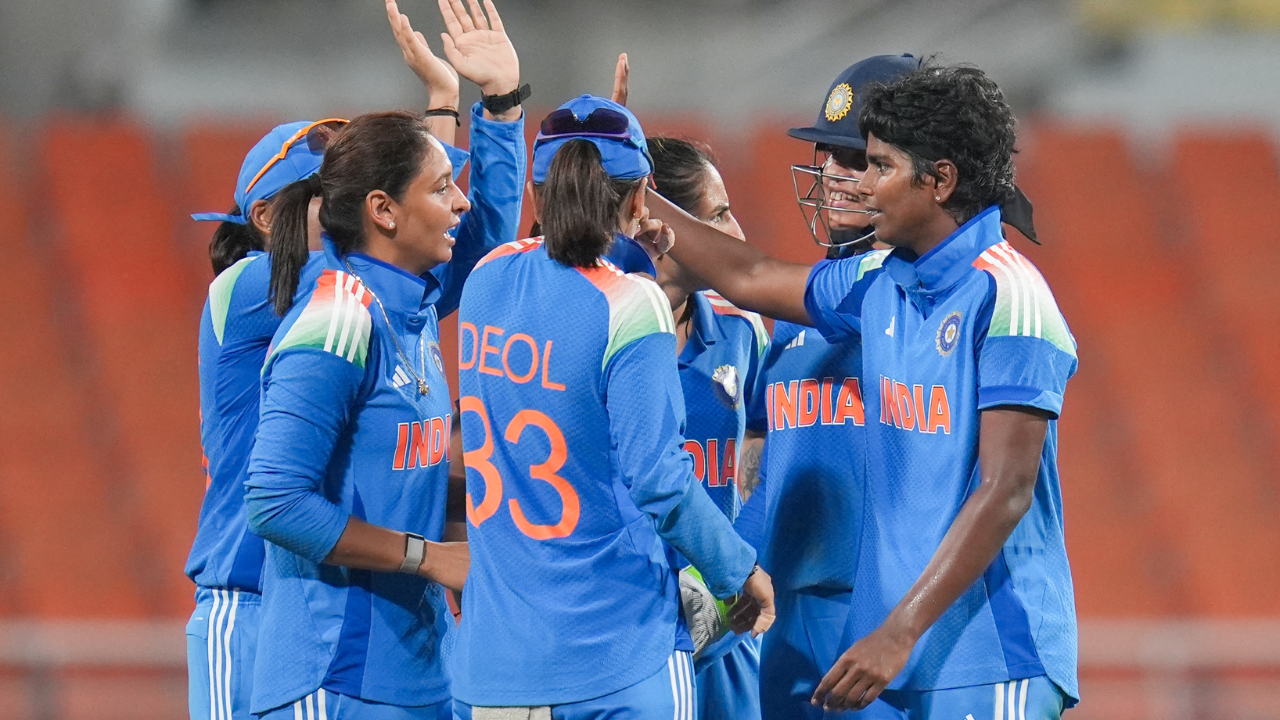
The all-important semi-final between hosts India and defending champions Australia is set to unfold at DY Patil Stadium in Navi Mumbai, a stage that has seen many dreams take flight, and a few get washed away. The lights are ready, the crowd is ready, the actors are ready. The only suspense that hangs heavy, will the curtain rise on this grand act, or will the monsoon clouds steal the show before it even begins?
Mumbai, drenched in anticipation and humidity, has been under yellow alert since 23 October. But long before the skies flashed warning signs, a metaphorical yellow alert had already arrived from Australia. When India finished fourth on the points table, it became inevitable that the home side would meet the top-ranked Aussies in the semi-final. The 25th of October sealed it, and the buzz turned to nervous laughter. Once fans came to terms with that first yellow warning, another followed, this time from the Indian Meteorological Department (IMD). A system brewing over the Arabian Sea had moved closer, threatening to bring rain right on the day India hoped to write history.
Yesterday may have spared the city a downpour, but it offered little relief, hot, sticky air and skies thick with uncertainty. Now, as the cricketing world looks towards Navi Mumbai, one question looms larger than all others: what happens if it rains?
The rain question
If the rain gods decide to meddle, the game will be a stop-start one. Overs could be trimmed, the rhythm broken, nerves stretched. But to produce a result, both sides must have faced at least 20 overs each, that’s the golden rule in ODIs. The iOS weather app predicts a 90 percent chance of precipitation, yet paradoxically shows only overcast conditions from 3 pm to midnight. For Indian fans, hope rests in those grey clouds somehow staying patient until the final ball is bowled, until we know who will join South Africa in the grand finale.
But suppose the skies don’t listen? Then, all eyes turn to the rulebook.
The reserve day saga
October 31, the reserve day for this clash, isn’t a fresh start. If play begins on the 30th, whatever is left unfinished will simply resume the next morning. If the match is reduced to 37 overs per side and only five overs of the second innings are completed, the players will return to complete the remaining 32 overs. The umpires’ priority will always be to finish it today, even if it means chopping it down to 20 overs each. The reserve day is the last lifeline, not the first option.
But what if even two days aren’t enough to beat the clouds?
When the points table becomes the judge
If the semi-final is washed out entirely, both on the 30th and the reserve day? Australia go through to the final. They topped the group with 13 points from seven matches; India, who finished fourth with three wins and seven points, will bow out. It’s a cruel twist, but it’s how the rules read.
And if the heavens open once more during the final itself?
Yellow all the way, Australia’s chase for their eighth
The ICC Women’s ODI World Cup 2025 final is scheduled for 2 November, with 3 November kept aside as a reserve day. The forecast again hints at 50 percent chances of rain, particularly between 11 am and 6 pm. If both days are washed out, the team that topped the table, Australia, yet again, will lift the trophy without playing another ball. It would be their eighth world title.
So tonight, Indian supporters won’t just be praying for Shafali and Smriti to weave magic at the top, or for Renuka and Kranti to find swing under the lights. They’ll be looking skyward, whispering the same quiet plea: “Dear God, keep the clouds away. We just want to play.”